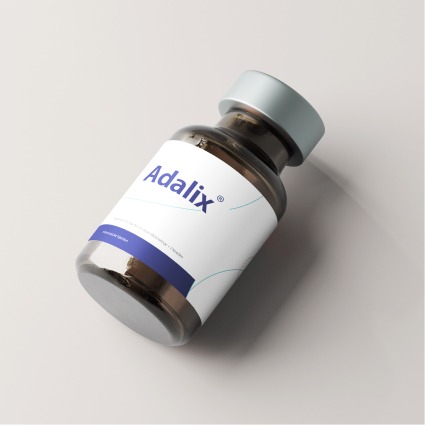Introduction: The Global Diabetes Crisis and the Role of Insulin Glargine
Diabetes mellitus, both Type 1 and Type 2, has become one of the most significant public health challenges worldwide, often referred to as the ‘Global Diabetes Crisis ‘. With a growing prevalence, diabetes requires long-term management, usually centered on insulin therapy. Among the various insulin options, insulin glargine is a preferred treatment for many patients, especially those requiring long-acting basal insulin to manage their blood glucose levels effectively.
Insulin glargine is a synthetic analog designed to provide steady, consistent insulin release, mimicking the natural action of the pancreas. First introduced to the market by Sanofi under the brand name Lantus, it has since become a cornerstone of diabetes management, offering patients better glycemic control and reducing the risk of complications associated with both types of diabetes. However, as with many high-cost biologics, access to insulin therapies remains challenging, particularly in low- and middle-income countries, where treatment affordability and availability are major hurdles.
Introducing biosimilars—products highly similar to existing reference biologics, but not identical due to their complex nature—has transformed the landscape of biologic therapies, offering a more affordable alternative to original treatments. Insulin glargine biosimilars, such as Abasaglar and Semglee, have entered the market recently, providing opportunities to lower costs and improve access for patients who rely on insulin. In Europe and many other regions, the launch of these biosimilars has led to significant reductions in insulin prices, giving hope to millions of patients who previously faced high treatment costs.
Market Dynamics: Price Trends and Economic Impacts of Biosimilar Insulin Glargine
A recent study examining insulin glargine pricing trends across 28 European countries from 2013 to 2023 sheds light on the profound economic shifts catalyzed by the introduction of biosimilars. The findings reveal that the overall price of insulin glargine has decreased by a significant 21.6% over the past decade. This substantial reduction is largely attributed to the market entry of biosimilars, which have spurred price competition and provided healthcare systems with more affordable options.
In 2022, the median price of the originator insulin glargine, Lantus, stood at €9.0 (IQR €8.1-€10.4), whereas its biosimilars, Abasaglar and Semglee, were priced at €8.9 (IQR €7.6-€10.1) and €7.0 (IQR €6.8-€7.5), respectively. This pricing difference illustrates the cost-saving potential of biosimilars, which offer comparable efficacy and safety to the originator product, yet at a lower cost.
Moreover, the entry of biosimilars was associated with a significant price drop for the originator product (p<0.001), both immediately after their market launch and in the long term, further emphasizing the competitive dynamics introduced by biosimilars. However, the study also noted that insulin pricing in various countries does not always correlate with economic indicators like GDP per capita, suggesting that factors such as government pricing policies, local production capabilities, and regulatory frameworks play crucial roles in shaping the market.
GCC Market Trends: Increasing Adoption of Biosimilars in the Middle East
As with Europe, the Gulf Cooperation Council (GCC) countries are witnessing a growing shift toward adopting biosimilars, particularly insulin glargine. In the GCC, healthcare systems have been under pressure due to rising costs associated with chronic diseases such as diabetes. Governments in countries like Saudi Arabia, the UAE, and Kuwait increasingly seek ways to optimize healthcare spending without compromising quality.
In 2025, the GCC insulin market has seen an 18% price reduction for insulin glargine over the past five years, following similar pricing trends in Europe. Biosimilars, in particular, are gaining traction as key components of healthcare reforms, helping to lower overall treatment costs and broaden access to essential medications. Countries in the GCC are also taking steps to foster local production of biosimilars, supported by favorable regulatory policies and strategic partnerships with international pharmaceutical companies.
Introducing biosimilars in these regions is not just about cost containment; it’s also a strategy to ensure greater patient access to insulin therapy. In countries like Saudi Arabia, the UAE, and Qatar, biosimilar insulin glargine is increasingly prescribed, increasing adoption rates. This shift toward biosimilars is expected to grow, especially as more affordable options like Glarise, a biosimilar of insulin glargine, enter the market.
The Strategic Entry of Companies like Opal Bio Pharma (OBP) into the GCC Market
As the demand for affordable insulin options rises globally, countries like Oman recognize the opportunity to enter the biosimilar market and contribute to global healthcare solutions. With its emerging biopharmaceutical sector, Oman has seen the potential in biosimilars, particularly insulin glargine, to meet local needs and establish a competitive position in the regional market.
In this context, Opal Bio Pharma (OBP), a biopharmaceutical company based in Oman, is actively pursuing opportunities to introduce Glarise, its biosimilar insulin glargine. The introduction of Glarise aligns with Oman’s strategic goals to diversify its economy, support the healthcare sector, and position itself as a key player in the biosimilar market. By offering Glarise as an affordable alternative to originator insulin glargine, OBP is meeting local healthcare needs and contributing to the broader region’s efforts to address the high cost of diabetes management.
OBP’s involvement in the biosimilar insulin glargine market, particularly in the context of secondary packaging for Glarise, underscores Oman’s ambition to play a leading role in the GCC’s evolving pharmaceutical landscape. The company’s efforts align with a growing trend in the region towards local production and facilitating patient access to quality, cost-effective medicines.
Glarise: A Competitive Biosimilar Option for the GCC Market
Glarise, developed by OBP, is a biosimilar insulin glargine formulated for managing Type 1 and Type 2 diabetes. Available as a 100 IU/3ml pre-filled pen (PFP), it offers a convenient and effective treatment option for patients requiring long-term blood glucose control. As the market for insulin glargine biosimilars continues to grow in the GCC, Glarise is poised to play an essential role in meeting the demand for high-quality, affordable insulin.
The affordability of Glarise is a key differentiator in markets where the cost of diabetes care is a concern. By offering a cost-effective alternative without compromising therapeutic efficacy, Glarise can enhance patient adherence and improve outcomes for those with diabetes in the region. As the healthcare systems in the GCC evolve, Glarise and similar biosimilars can play a crucial role in improving patient access to essential therapies, reducing the financial burden on both patients and healthcare systems.
Regulatory and Market Considerations for Biosimilars in the GCC
The regulatory landscape for biosimilars in the GCC region is evolving rapidly. Governments in the UAE, Saudi Arabia, and other GCC countries have developed more robust frameworks for approving biosimilars, focusing on safety, efficacy, and immunogenicity. These frameworks ensure that biosimilars meet stringent standards, facilitating market entry and adoption.
In Oman, where OBP is based, the regulatory environment has increasingly supported biosimilars, paving the way for Glarise’s triumphant entry. This regulatory alignment with global standards is crucial for ensuring that biosimilars can compete effectively in the market while maintaining high safety and quality standards.
Future Outlook: The Continuing Role of Biosimilars in Diabetes Management
The biosimilar insulin glargine market in the GCC is expected to continue expanding. Governments will likely continue pushing for cost-reducing measures in healthcare, while healthcare providers will increasingly adopt biosimilars to improve patient access to insulin. For companies like Opal Bio Pharma, the ongoing focus will be on ensuring the high quality of their products, maintaining competitive pricing, and supporting patient access programs.
As the biosimilar landscape continues to evolve, Glarise and other biosimilars will play a pivotal role in reducing the cost burden of diabetes treatment. This will enhance patient adherence, improve outcomes, and support the sustainability of healthcare systems across the GCC and beyond.
Conclusion
Introducing biosimilars has significantly impacted the insulin glargine market, reducing costs and increasing patient access to life-saving treatments. In Europe, the price of insulin glargine has dropped dramatically following the launch of biosimilars, and similar trends are evident in the GCC region. The entry of companies like Opal Bio Pharma with products such as Glarise represents a strategic move to meet local demand and position Oman as a competitive player in the global biosimilar market. As biosimilars continue to reshape the landscape of diabetes care, Glarise’s role in offering an affordable, high-quality alternative to originator insulin glargine is set to play an increasingly important part in the future of diabetes management in the GCC and beyond.

